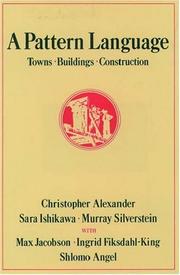luxon@bookwyrm.social reviewed A Pattern Language by Christopher Alexander (Center for Environmental Structure)
Review
4 stars
This is a wonderful book to stimulate thinking. I don’t think it makes for good front-to-back reading material, but the pattern-based style works great for flipping through, and every once in a while I struck on one that immediately made sense to me and appealed. Some of the patterns feel dated (I really hope we will not need so many patterns around how to defend ourselves against cars in thirty years!), but more interesting were those bits were things felt missing – there’s no pattern for a community house except for large families, nothing to think about more temporary living situations, and no help in how to set up a space for a party. But the way of describing a pattern is so straightforward that each lacuna made me want to design my own, and even if the book had only produced that feeling, it would have been enough.
…
This is a wonderful book to stimulate thinking. I don’t think it makes for good front-to-back reading material, but the pattern-based style works great for flipping through, and every once in a while I struck on one that immediately made sense to me and appealed. Some of the patterns feel dated (I really hope we will not need so many patterns around how to defend ourselves against cars in thirty years!), but more interesting were those bits were things felt missing – there’s no pattern for a community house except for large families, nothing to think about more temporary living situations, and no help in how to set up a space for a party. But the way of describing a pattern is so straightforward that each lacuna made me want to design my own, and even if the book had only produced that feeling, it would have been enough.
The patterns for designing a livable city made me sad – it all makes sense, but it’s at best an aspiration for where we want to get. As a utopia, I enjoyed it.

